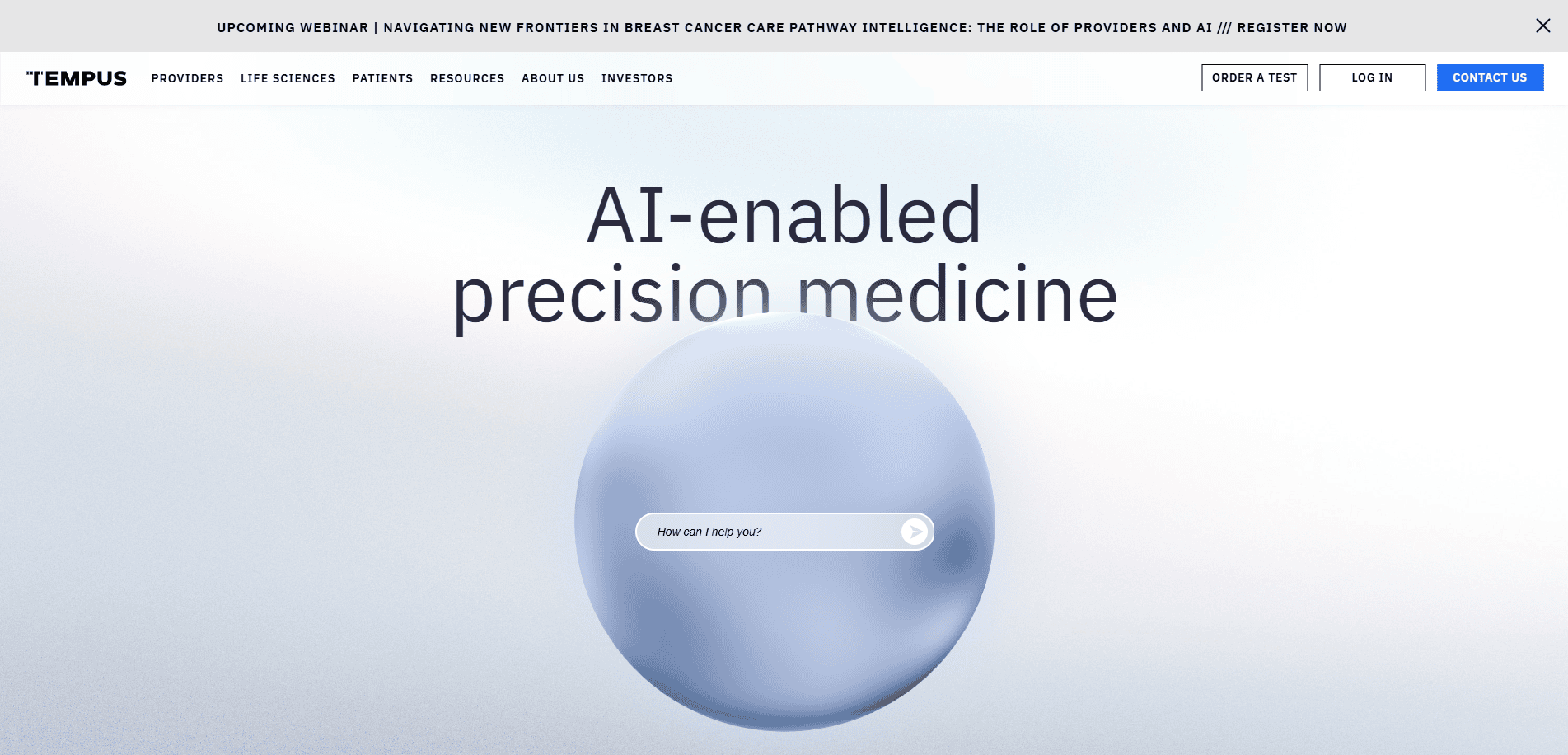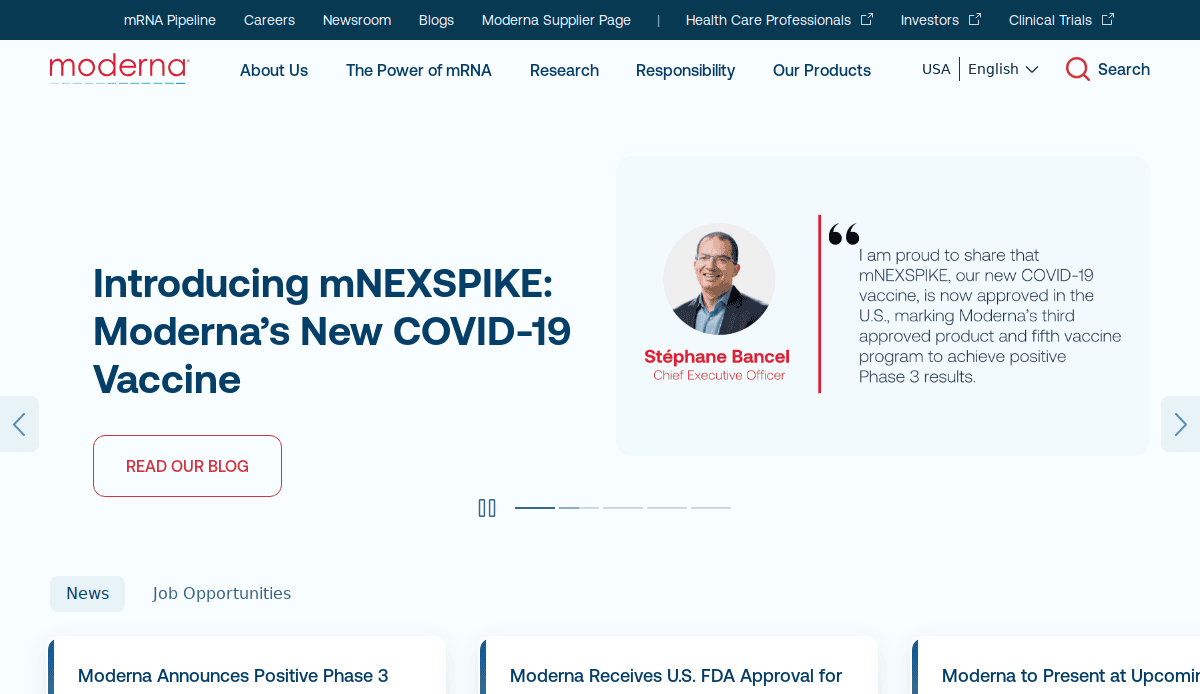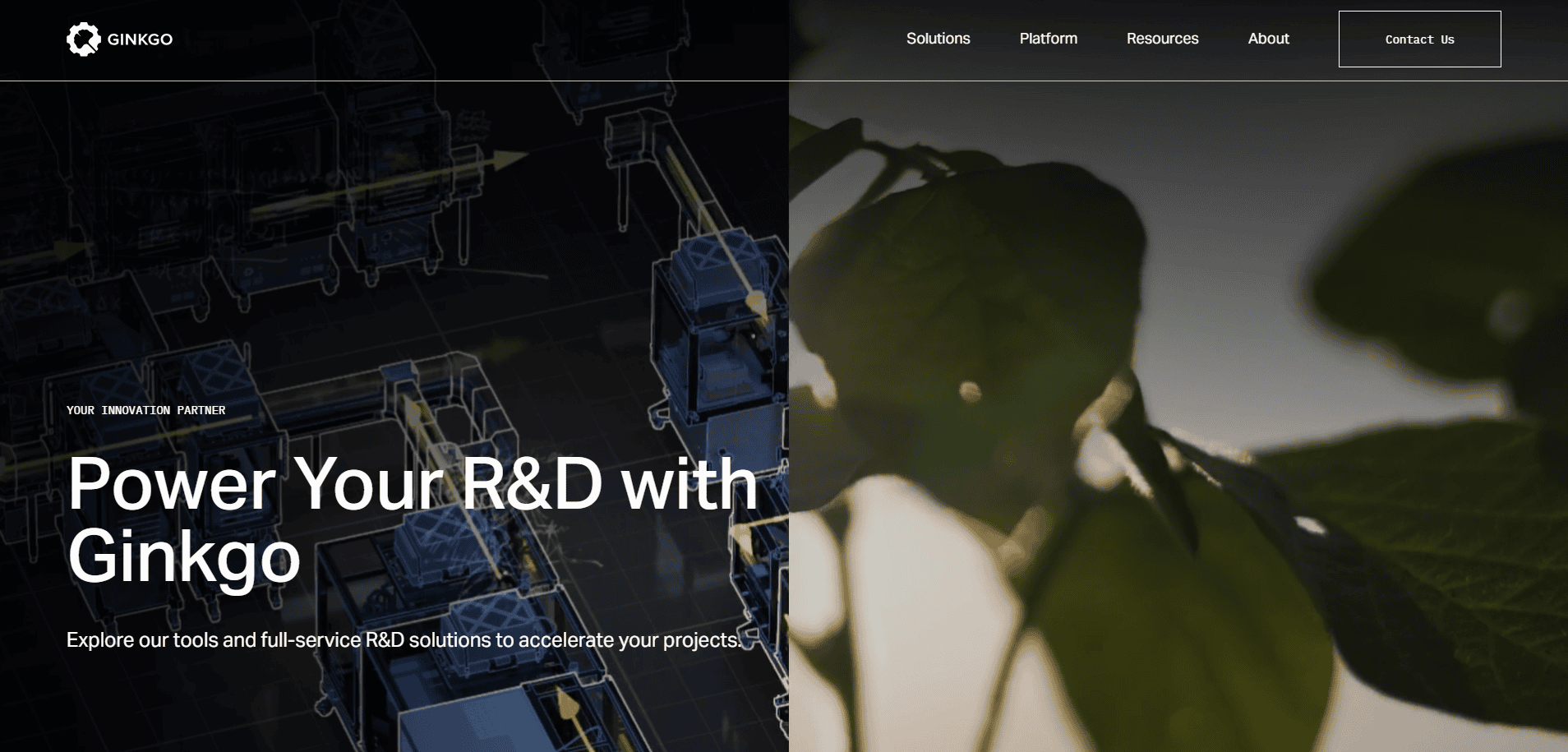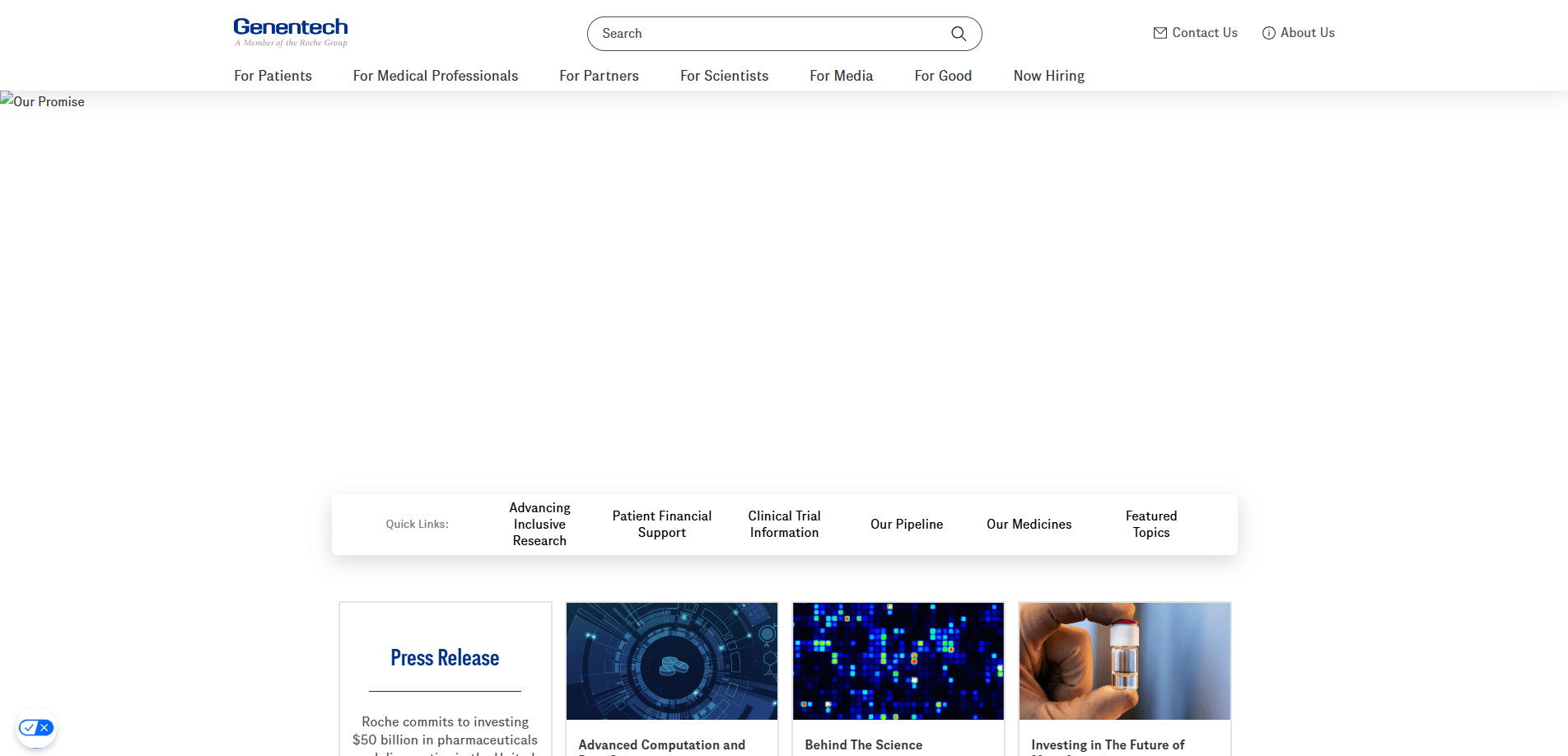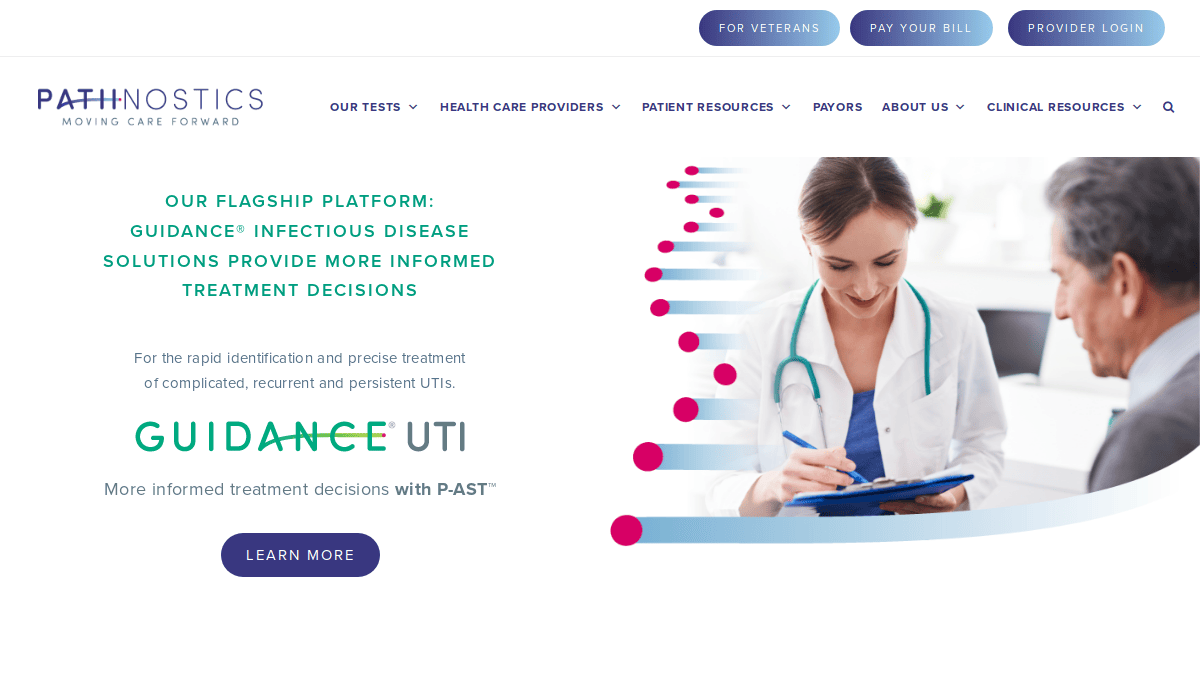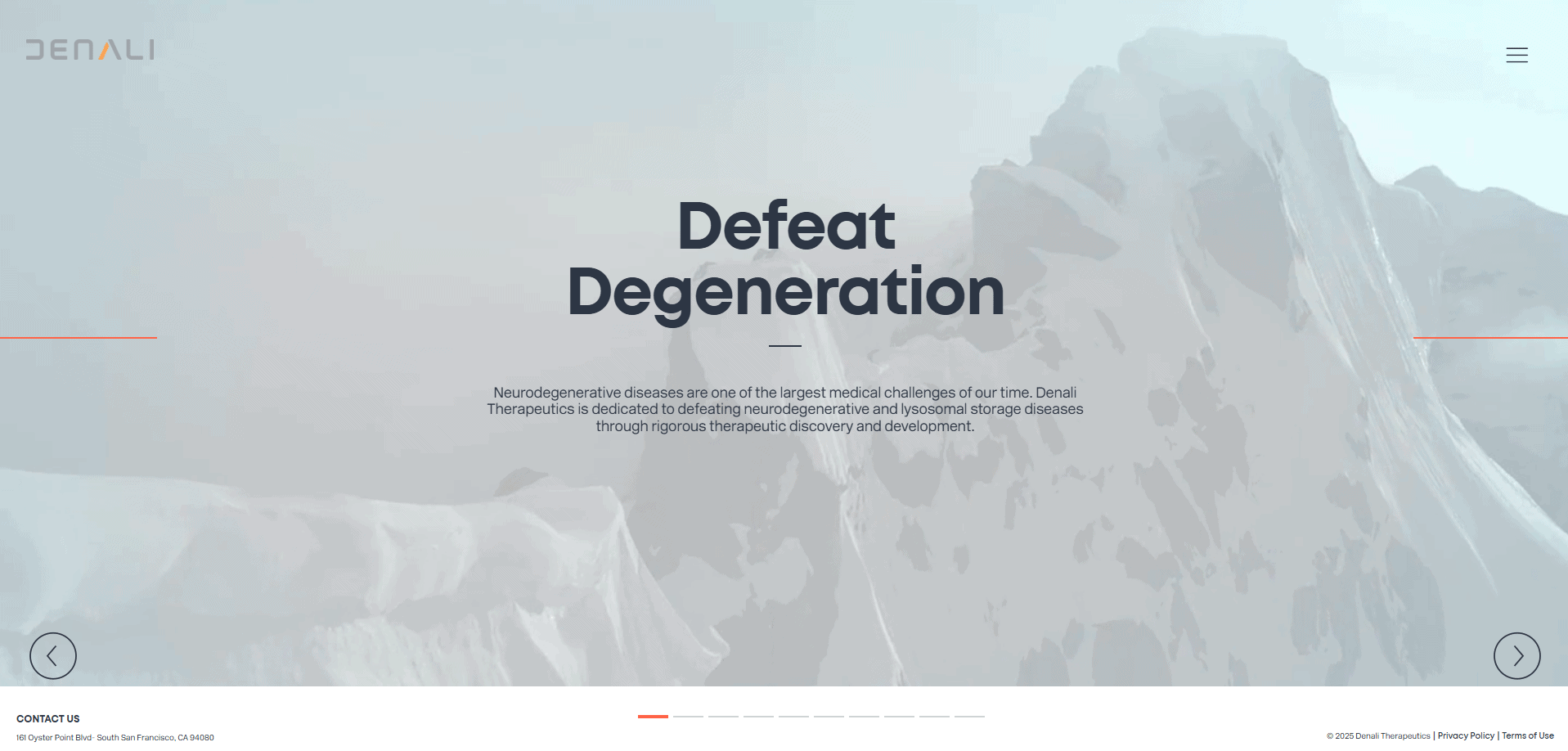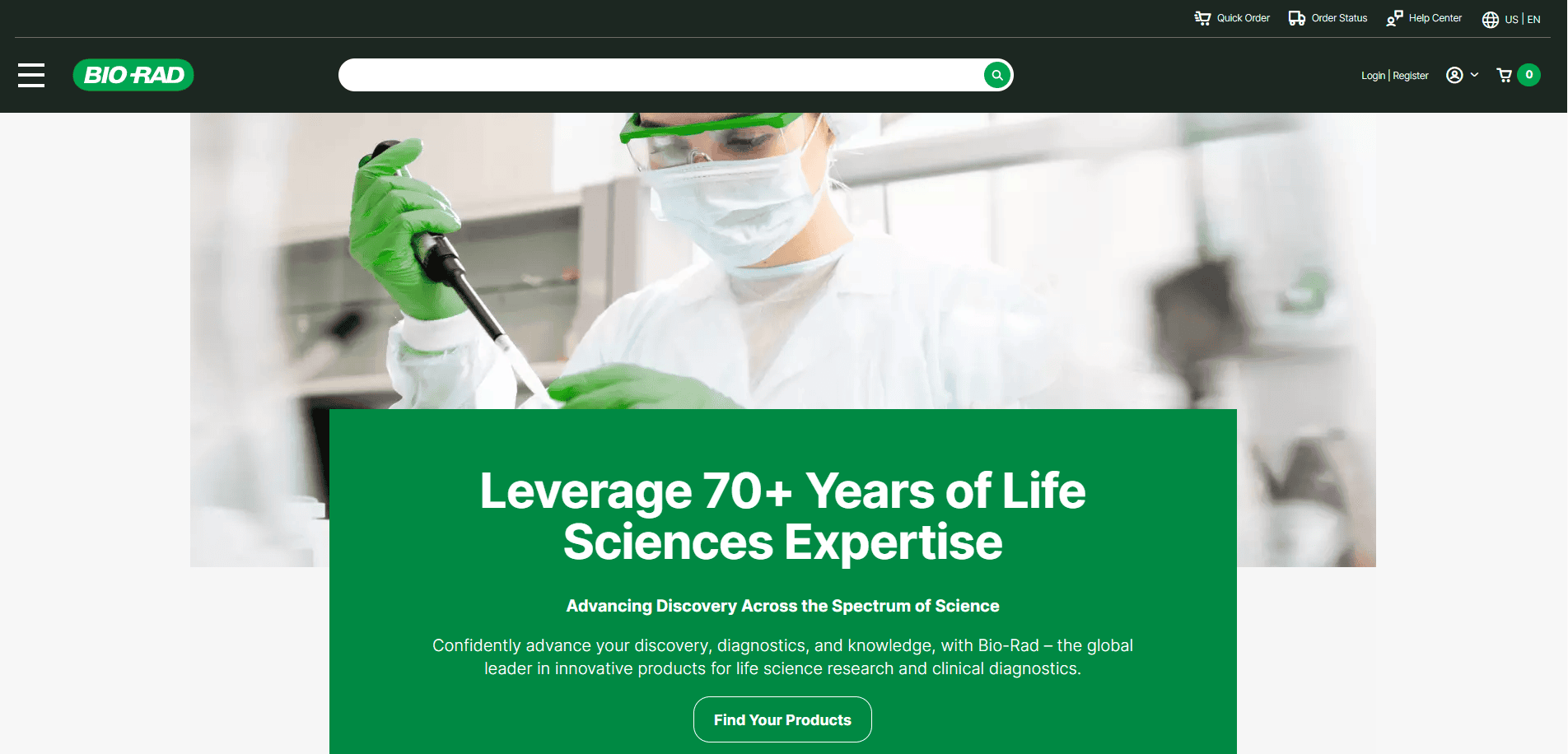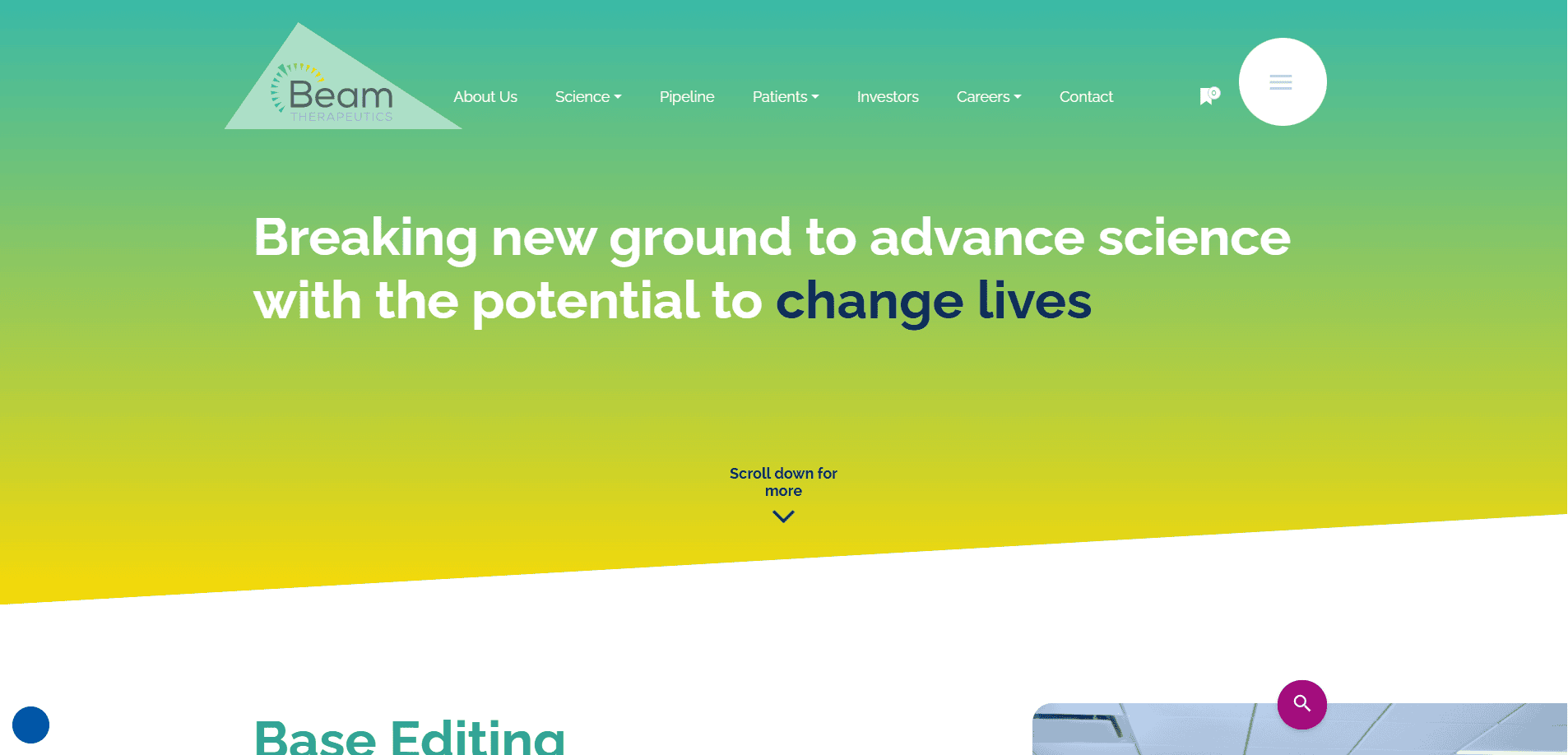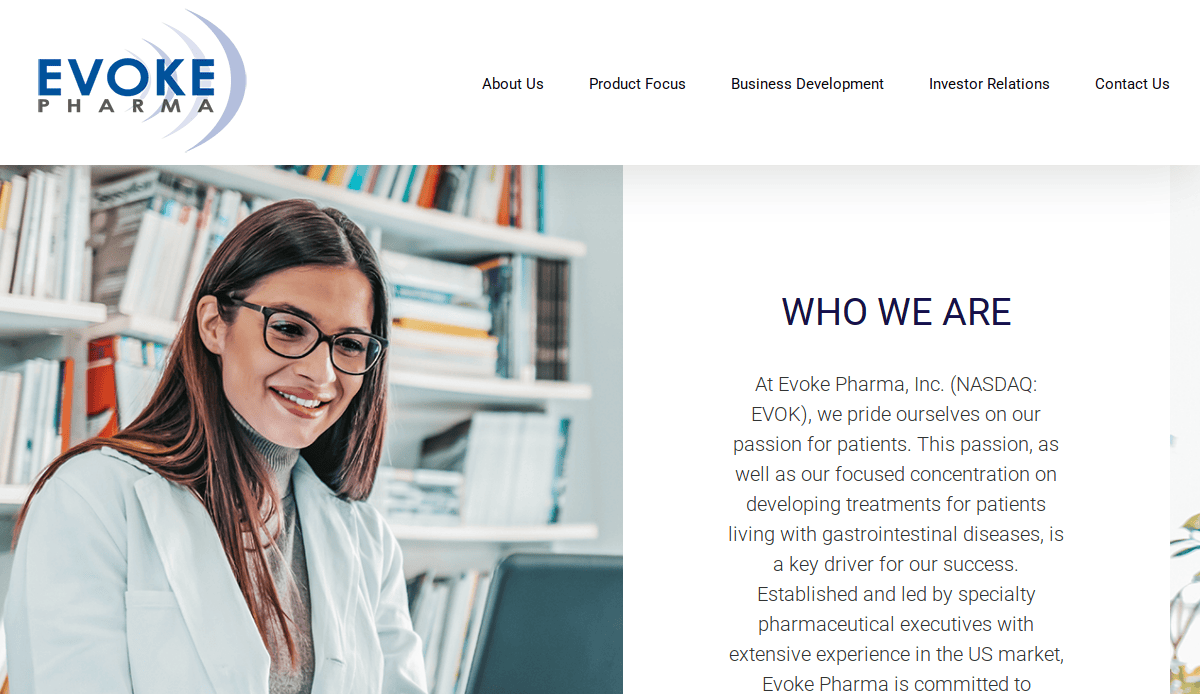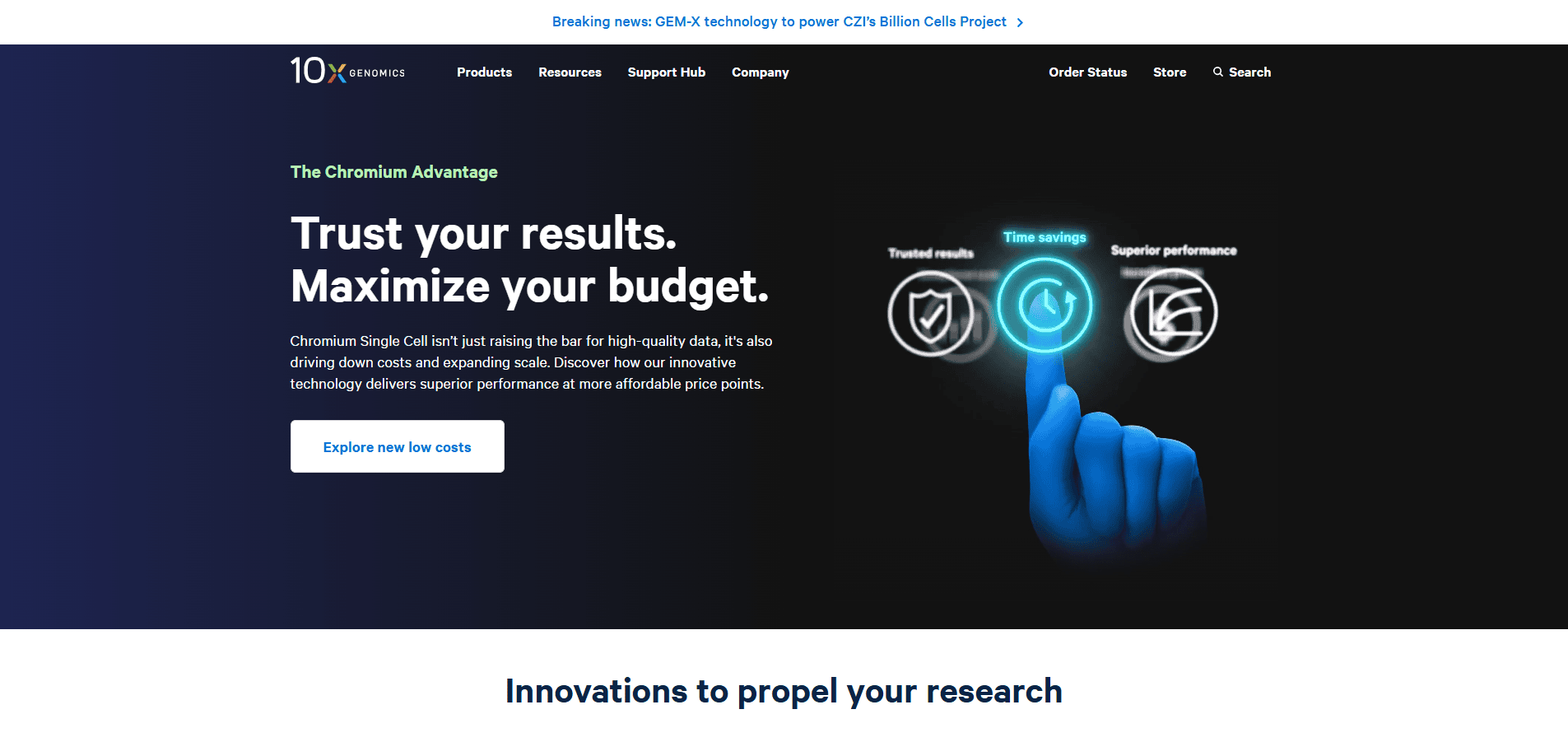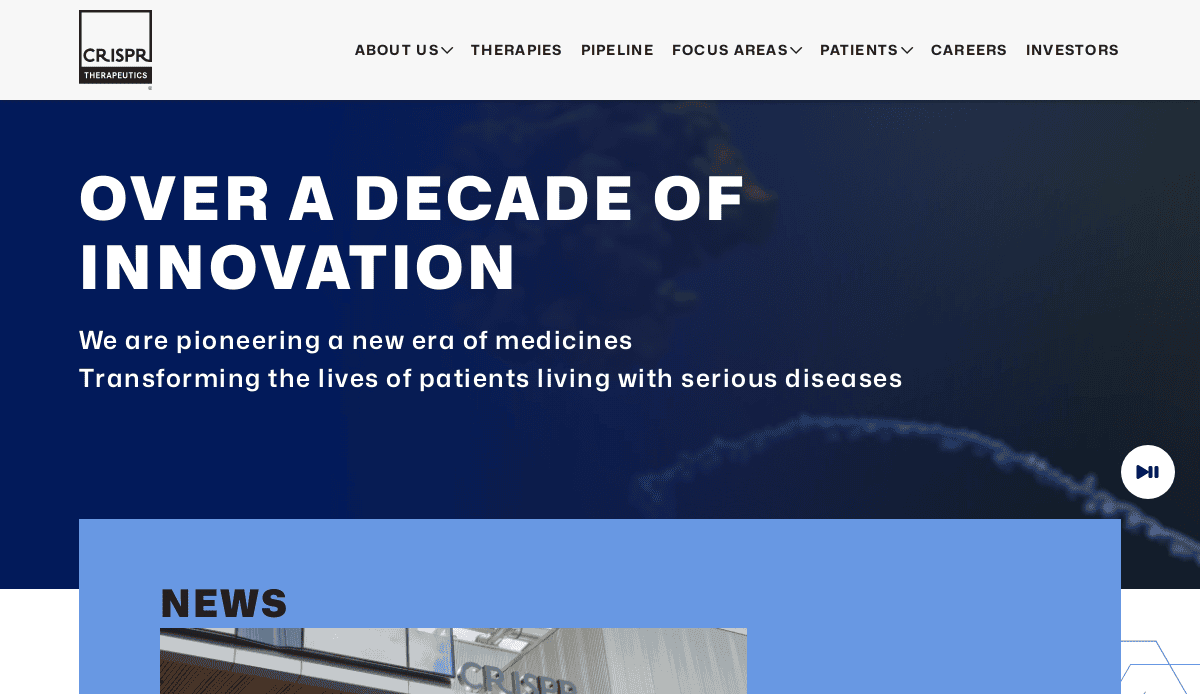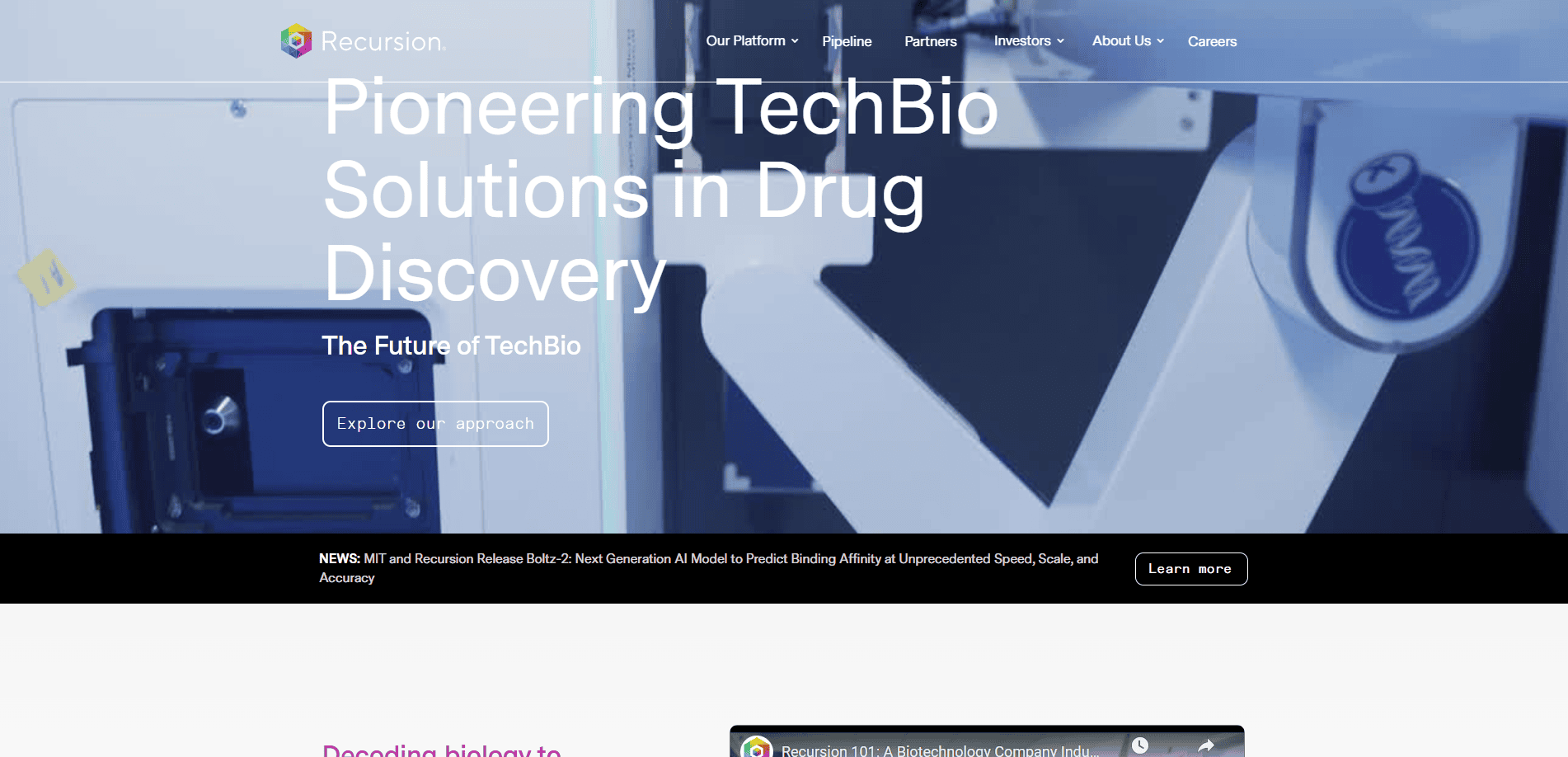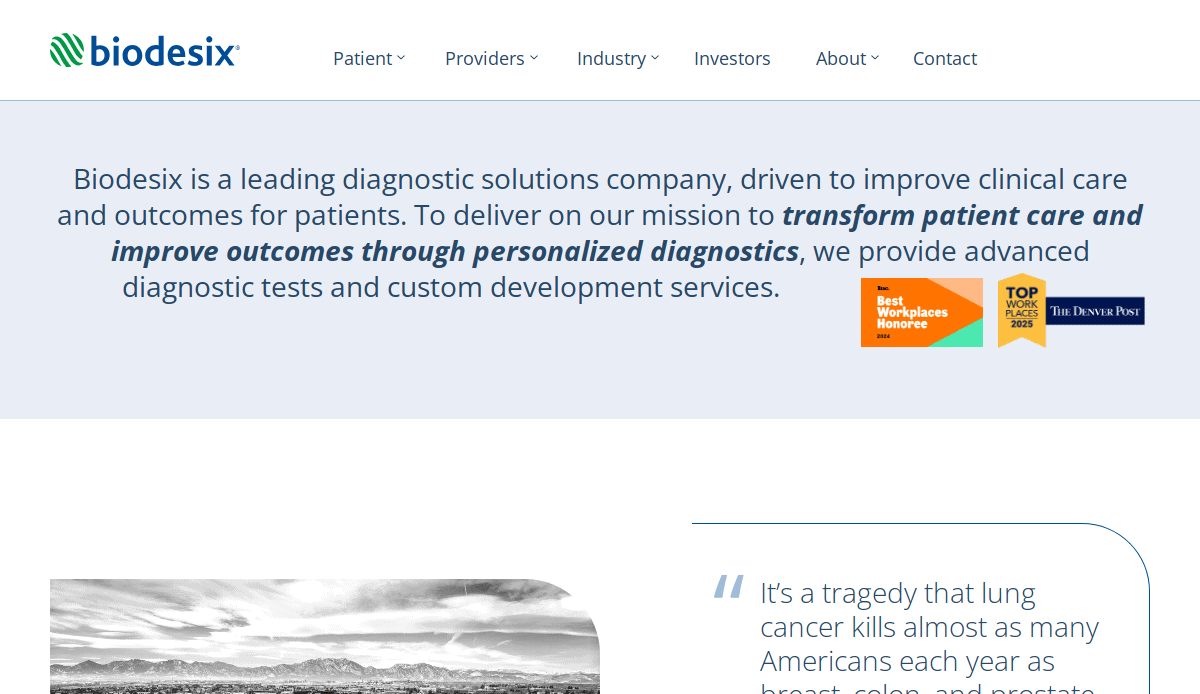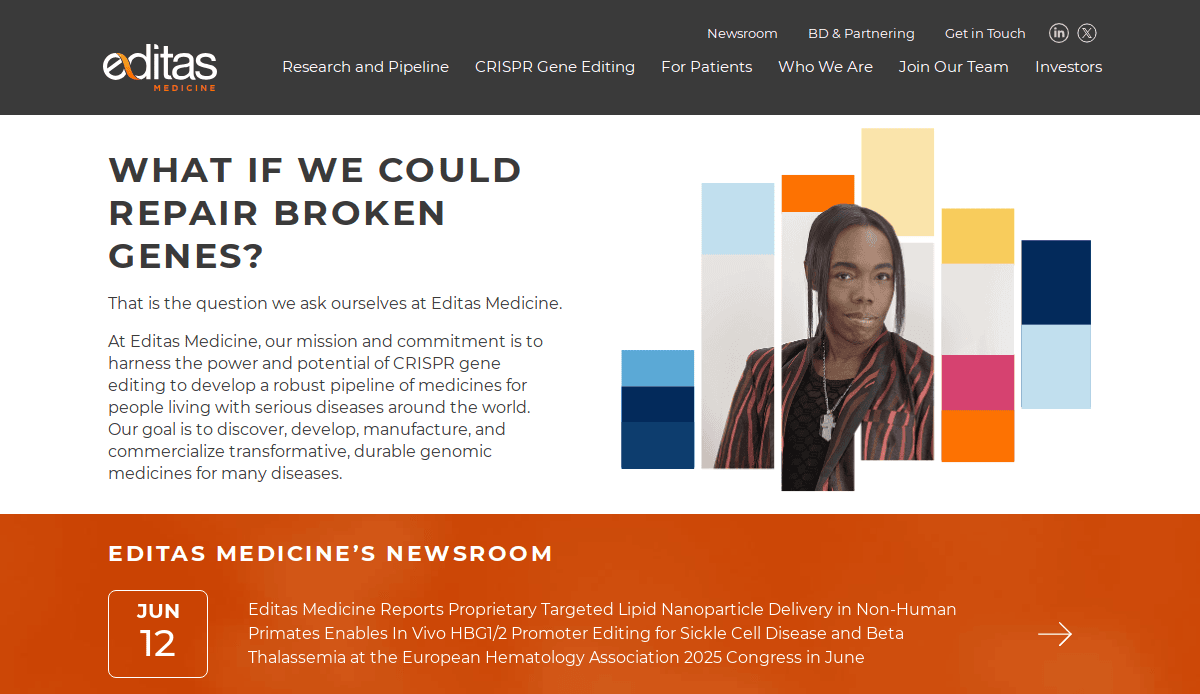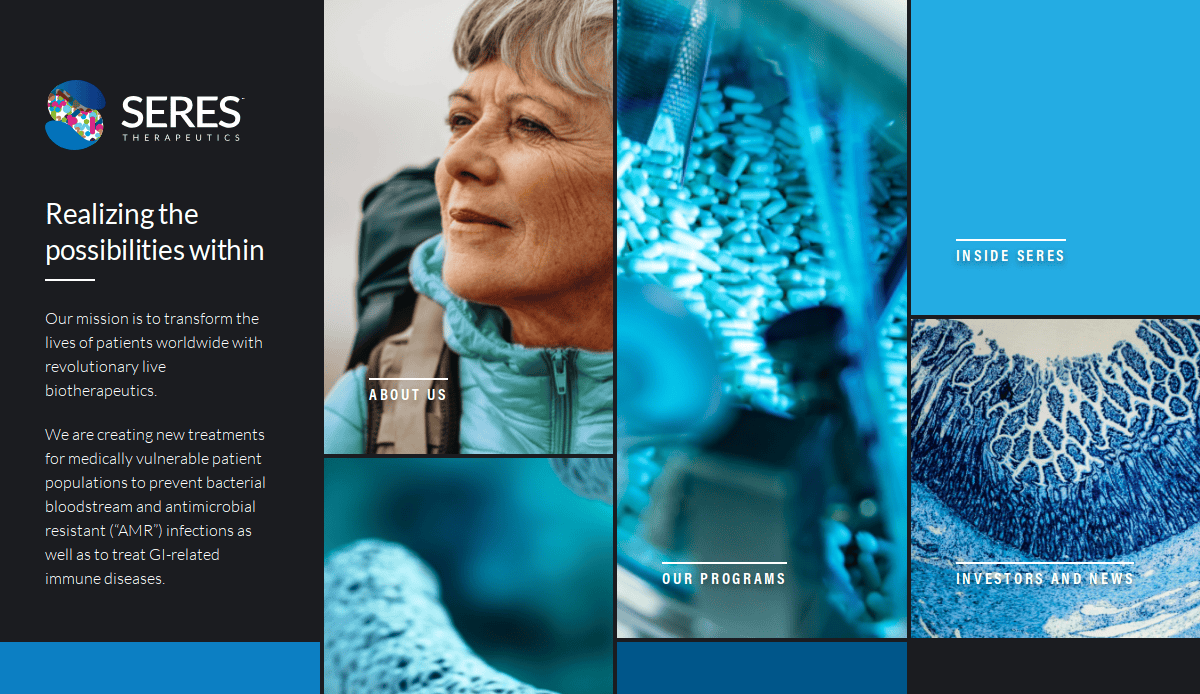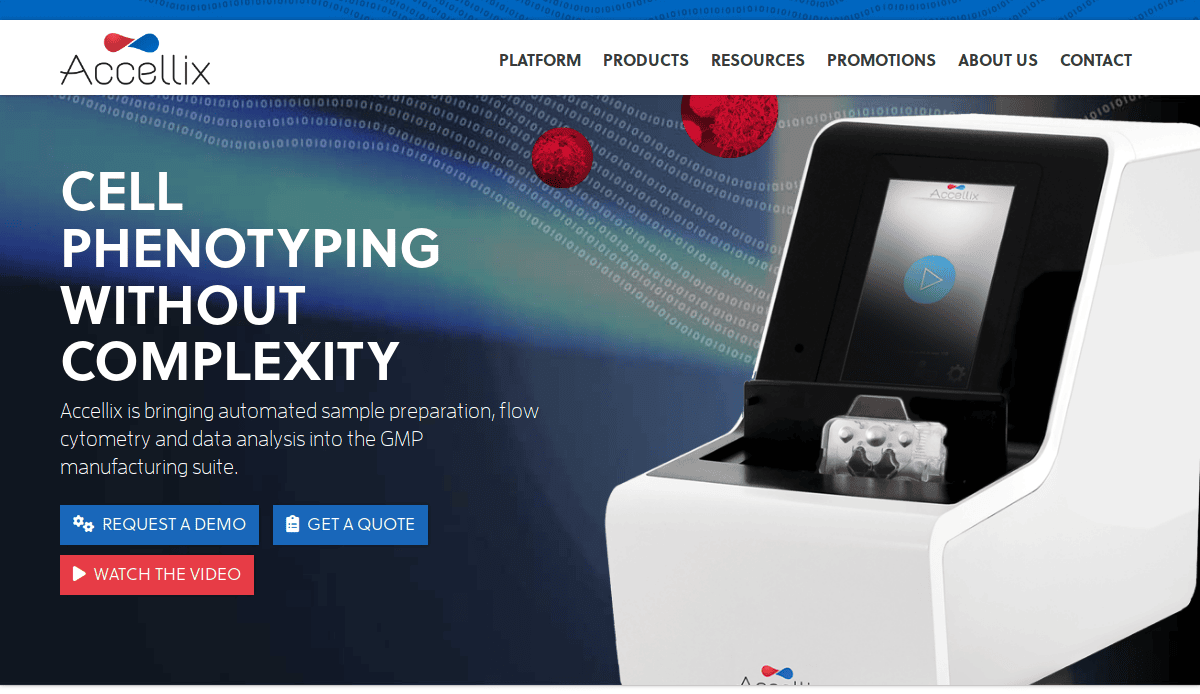Just looking for our Best Biotech Website examples list?
Key Takeaways:
- Design to Establish Scientific Credibility: Biotech websites must immediately convey trust through modern, clean, and professional design. Features like industry certifications, scientific partnerships, and lab visuals play a critical role in establishing credibility with researchers, investors, and regulatory stakeholders.
- User Experience is Paramount for Diverse Audiences: Biotech companies serve multiple personas—including researchers, investors, and healthcare professionals. Your website must have intuitive navigation, clear information hierarchies, and personalized user pathways to serve each visitor segment effectively.
- SEO Is a Growth Multiplier: Search engine optimization for biotech websites goes beyond basic keyword use. Incorporate terms like “biotech website design” and “life sciences digital marketing” into metadata, alt tags, and structured content to increase visibility across search platforms and AI-powered search tools.
Why Biotech Website Design Can Make or Break Your Digital Presence
In the biotechnology industry, where innovation is everything and competition is intense, your website serves as your first and most powerful impression. It’s not just about looking good—it’s about clearly communicating complex science, proving your credibility, and building trust with everyone from investors and researchers to regulatory bodies and the general public.
Great website design transforms how your company is perceived online. A high-performing site can elevate your brand, support funding efforts, drive talent recruitment, and serve as the backbone for your digital marketing strategy. If your current site is slow, hard to navigate, or visually outdated, you’re missing out on serious business opportunities. In this guide, we’ll show you how to rethink and redesign your website for impact, visibility, and growth.
Website Planning & Purpose: Laying the Groundwork for Success
Before diving into wireframes or design templates, designing must begin with strategic planning. The planning phase is where high-performing websites are made or broken—it sets the tone, defines the strategy, and identifies the measurable outcomes that will guide the design and development process.
Biotech firms must start by defining the primary goals of their website. Are you focused on investor relations, research recruitment, product development, or public education? Each goal dictates different UX priorities, design structures, and content strategies. It’s also critical to identify all key user personas—researchers, investors, healthcare professionals, regulators—and outline what each group needs from the site. This ensures that the website architecture, navigation, and content are structured around real user needs.
Next, perform a full content audit and competitor analysis. Understand what your current site does well, where it fails, and how competitors are positioning themselves digitally. This competitive gap analysis reveals opportunities to stand out in visual design, messaging, and keyword targeting. It also serves as a baseline for performance improvements post-launch.
Lastly, biotech companies must define success metrics. Website KPIs like average time on page, form submissions, white paper downloads, and traffic sources should be established upfront. These metrics inform the ongoing optimization plan and ensure your investment translates into tangible business results. A website isn’t just a digital asset—it’s a strategic growth engine that should be planned with precision.
Design Principles: Key Elements of High-Impact Website Design
Content and navigation are the connective tissue of a biotech website. They determine how easily users can find the information they need and how effectively your messaging resonates with target audiences. Poor structure leads to user frustration, while well-organized content enhances engagement, trust, and conversion.
Start with a strategic content hierarchy. Map out your most important messages—your company’s mission, research focus, product pipeline, team expertise—and structure them in a top-down format. Lead with high-level overviews and allow users to drill down into more technical or detailed pages. This tiered structure serves both scientific and general audiences.
Navigation must be clean, predictable, and user-centric. Limit top-level menu items to 5–7 to avoid overwhelming users. Use clear labels like “About Us,” “Our Science,” “News & Insights,” “Careers,” and “Contact.” Include sticky or persistent guidance to maintain access across the browsing experience, particularly on longer pages.
Leverage breadcrumb trails and contextual links within pages to guide users through logical content journeys. Avoid siloing information—link related content like case studies, blog posts, and product descriptions to enrich the user experience and support internal linking for SEO.
Content should be scannable. Use short paragraphs, bullet lists, and callout boxes to break up text and highlight key messages. Each page should have a clear call to action—whether it’s to download a brochure, book a consultation, or sign up for a newsletter.
Finally, integrate search functionality with filters and predictive text to help returning visitors quickly locate information. Biotech professionals often return to sites for updates, making a robust search tool a valuable feature.
When structured properly, your content and user pathways can turn complex scientific narratives into clear, accessible pathways that drive understanding, trust, and action.
Visual Elements: Bringing Biotech Brands to Life Through Design
Visual elements are the most immediate and impactful components of a website. In a field where abstract science and high-level innovation dominate, visuals serve as a translator, communicator, and brand amplifier. They play a critical role in shaping user perception, action steps, and reinforcing brand identity.
Start with a cohesive visual identity. Use a unified color palette that reflects your brand’s values—cool tones like blues and greens often suggest trust, cleanliness, and science. Custom icons and branded illustrations can replace generic stock photos to create a more authentic and professional feel.
Photography should focus on real people, labs, and equipment wherever possible. Authentic imagery of your team at work, your facilities, and your technology helps humanize your brand and builds trust. Avoid overused stock imagery that can feel impersonal or generic.
Animations and videos are especially powerful in biotech. Use them to explain complex mechanisms, showcase lab techniques, or walk investors through a product pipeline. These dynamic visuals improve understanding and boost engagement, especially for site visitors who prefer watching over reading.
Charts, infographics, and data visualizations help distill dense scientific data into digestible insights. They should be integrated into content, not isolated, to support storytelling and reinforce key messages.
Whitespace is just as important as graphic elements. It helps reduce visual clutter, draws attention to CTAs, and makes the site feel clean and modern. Use spacing strategically to guide the eye and improve scannability.
All visual assets must be optimized for speed and performance. Use compressed image formats and lazy-loading to ensure quick load times without compromising quality. Mobile responsiveness is essential—every visual must scale gracefully across devices.
Ultimately, visual elements on a website should work together to clarify, not complicate. They should guide users, support content, and elevate the brand without distracting from the core message. When executed correctly, visuals become the emotional and functional bridge between the science and the audience.
Ongoing WordPress Maintenance: Keeping Sites Secure & High-Performing
Once a website is launched on WordPress, the work isn’t over. Ongoing maintenance is essential to preserve performance, security, and functionality. Biotech companies manage sensitive information and cater to a technical audience—any lapse in uptime or data protection can harm credibility and erode trust.
Start with core updates. WordPress regularly releases updates to improve performance and patch vulnerabilities. These must be applied promptly across the core platform, themes, and plugins to minimize exposure to cyber threats.
Security monitoring is non-negotiable. Biotech firms must implement firewalls, malware scanning, and brute force protection to defend against breaches. Routine security audits and threat monitoring ensure early detection of issues before they escalate into critical risks.
Performance optimization is equally important. Over time, unused plugins, bloated databases, and caching conflicts can slow site speed. Conduct regular performance audits, optimize databases, and verify that caching and CDN configurations continue to function effectively.
Backup solutions must be in place. Schedule automated, off-site backups of both site files and databases. In the event of a crash or cyberattack, a reliable backup ensures that your site can be restored without significant downtime or data loss.
Content integrity checks should be part of the maintenance plan. Confirm that links remain active, forms are functioning, and integrations with CRM or analytics tools are still reliable. This helps maintain user experience and data accuracy.
Compliance requirements such as GDPR or HIPAA may necessitate additional updates to cookie consent tools or privacy policies. These should be reviewed periodically to stay aligned with legal and regulatory changes.
Finally, reporting and oversight are key. A monthly maintenance report that summarizes security checks, update logs, uptime, and performance metrics provides transparency and allows for proactive improvements.
In biotech, reliability is paramount. A well-maintained WordPress site ensures that the digital presence remains trustworthy, secure, and ready to support ongoing business goals.
Best Biotech Website Design Examples
1. Tempus
Location: Chicago, IL
Key Takeaways: Clean layout with strong navigation, impactful messaging for researchers and clinicians, and data-driven visuals.
2. Moderna
Location: Cambridge, MA
Key Takeaways: Modern design, clear investor-focused messaging, and well-structured R&D insights.
3. Illumina
Location: San Diego, CA
Key Takeaways: Compelling homepage design, user-friendly pathways, excellent use of animation, and visual storytelling.
4. Ginkgo Bioworks
Location: Boston, MA
Key Takeaways: Bold design aesthetic, interactive homepage experience, strong storytelling with video and illustrations
5. Genentech
Location: South San Francisco, CA
Key Takeaways: Visually rich homepage, effective use of CTAs, clean and accessible navigation for all audiences.
6. Pathnostics
Location: Irvine, CA
Key Takeaways: Professional branding, clear visual hierarchy, streamlined user journey from homepage to services.
7. Denali Therapeutics
Location: South San Francisco, CA
Key Takeaways: Strong UX design, scientific credibility through case studies, clear CTAs, and investor information.
8. Bio-Rad
Location: Hercules, CA
Key Takeaways: Data-rich visuals, robust search features, and effective content segmentation for multiple audiences.
9. Beam Therapeutics
Location: Cambridge, MA
Key Takeaways: Sharp and modern homepage design, interactive pipeline section, clear storytelling around gene editing.
10. Evoke Pharma
Location: Solana Beach, CA
Key Takeaways: Clean design, strong compliance layout, and well-organized clinical data for investor trust.
11. Agendia
Location: Irvine, CA
Key Takeaways: Seamless UX across devices, well-structured service offerings, visually compelling homepage slider.
12. 10x Genomics
Location: Pleasanton, CA
Key Takeaways: Interactive visuals, research-focused messaging, strong integration of data graphics.
13. CRISPR Therapeutics
Location: Boston, MA
Key Takeaways: Bold visuals aligned with cutting-edge science, concise content sections, and focused CTAs.
14. Recursion
Location: Salt Lake City, UT
Key Takeaways: Interactive homepage, strong brand visuals, seamless integration of investor relations and scientific research.
15. Biodesix
Location: Boulder, CO
Key Takeaways: Clear structure, mobile-friendly design, data visuals supporting diagnostic services.
16. Editas Medicine
Location: Cambridge, MA
Key Takeaways: Clear pipeline display, modern visual design, focused action steps for stakeholders.
17. Seres Therapeutics
Location: Cambridge, MA
Key Takeaways: Clean aesthetic, easy-to-navigate layout, strong credibility through clinical partnerships.
18. Veracyte
Location: South San Francisco, CA
Key Takeaways: User-friendly experience, strong patient education features, dynamic video and graphic content.
19. LeukoDx
Location: Chicago, IL
Key Takeaways: Professional and modern UI, concise content delivery, and intuitive site architecture.
Take the Next Step in Elevating Your Biotech Web Presence
Effective biotech web design isn’t just about aesthetics—it’s about implementing best practices that make your site more user-friendly, responsive across mobile devices, and capable of enhancing user engagement through interactive elements and seamless UX design. From strategic content structure to optimized performance and ongoing maintenance, your website should reflect the credibility and innovation of your biotech company.
If your current site isn’t driving results or feels outdated, now is the time to create a website that delivers. At our full-service digital marketing agency, we specialize in building user-centered, responsive design solutions tailored specifically for biotech companies.
Ready to build a more effective biotech website? Schedule a free consultation with us today.
Your Industry Web Design FAQs Answered
What are the best practices for biotech web design?
Best practices for biotech web design include clear visual hierarchy, responsive design, intuitive pathways, and content that speaks to your target audience. Focus on user-friendly websites that demonstrate scientific credibility and integrate SEO to boost visibility in search.
How do I design a site that appeals to both investors and researchers?
To design a website for multiple audiences, segment content using strategic UX design. Use well-organized menus and homepage design to guide visitors. Balance investor highlights (like financial reports) with technical sections for researchers.
What pages should a website homepage include?
A strong homepage should feature an overview of your science, company mission, news, career opportunities, and CTAs. Use modern design and interactive elements to engage users immediately.
When should I consider a website redesign?
Consider a website redesign if your site is outdated, non-responsive, slow, or not aligned with your biotech company’s current brand or strategy. A redesigned website should reflect current design trends and ensure that your website meets accessibility and compliance standards.
What makes a well-designed website for life science companies?
A well-designed website combines clean design, responsive frameworks, compelling content, and meaningful user pathways. For life science companies, accuracy, accessibility, and visual storytelling are essential.
How do design elements influence user engagement?
Design elements like infographics, animations, and structured CTAs increase engagement by making complex biotech content digestible. These elements also improve time on page and lead conversion.
Should I hire a specialized design agency or a general marketing agency?
For the biotech industry, a specialized website design agency like ours understands the complexities of scientific content, compliance, and stakeholder communication better than a general digital marketing agency.
What are the benefits of responsive design?
Responsive design ensures that your website is easy to use on all screen sizes. It supports a better user experience, boosts search rankings, and allows biotech companies to present a seamless experience across desktop and mobile devices.
How often should biotech companies update their site content?
Content updates should occur regularly, especially in fast-moving biotech markets. News, publications, and product updates keep the site relevant and support SEO. A new site should launch with a CMS that enables efficient content updates.
What role does SEO play in web design for biotech?
SEO helps elevate your website by increasing its visibility in search engines. Practices for biotech web design include keyword optimization, schema markup, internal linking, and technical performance enhancements. Learn more about SEO for professional services to strengthen your biotech digital presence.

